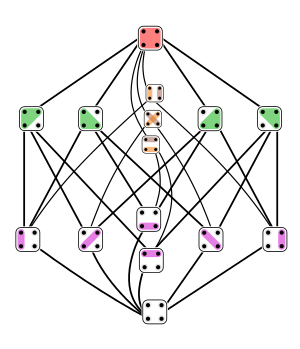
In mathematics, particularly in combinatorics, a Stirling number of the second kind (or Stirling partition number) is the number of ways to partition a set of n objects into k non-empty subsets and is denoted by or .[1] Stirling numbers of the second kind occur in the field of mathematics called combinatorics and the study of partitions. They are named after James Stirling.
The Stirling numbers of the first and second kind can be understood as inverses of one another when viewed as triangular matrices. This article is devoted to specifics of Stirling numbers of the second kind. Identities linking the two kinds appear in the article on Stirling numbers.
- ^ Ronald L. Graham, Donald E. Knuth, Oren Patashnik (1988) Concrete Mathematics, Addison–Wesley, Reading MA. ISBN 0-201-14236-8, p. 244.

